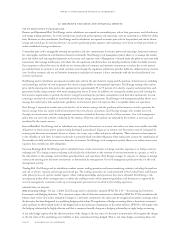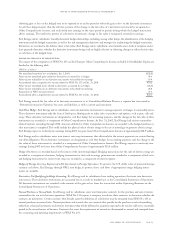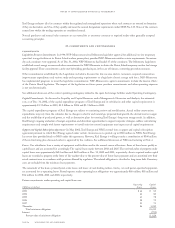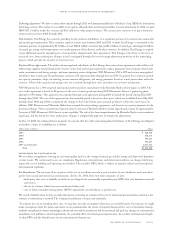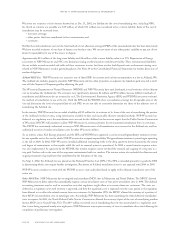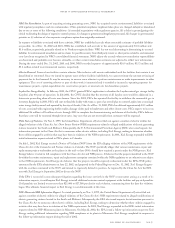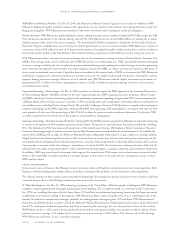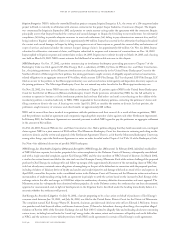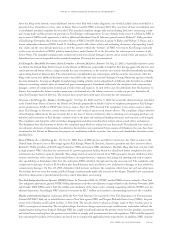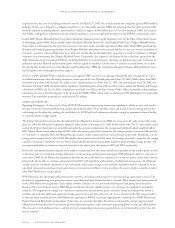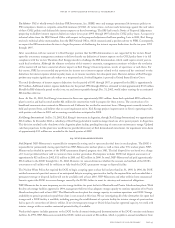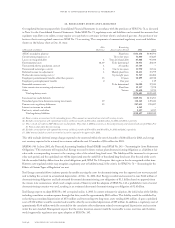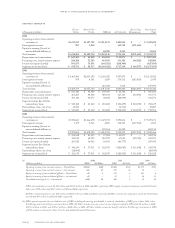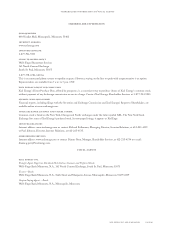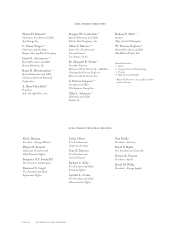Xcel Energy 2002 Annual Report Download - page 78
Download and view the complete annual report
Please find page 78 of the 2002 Xcel Energy annual report below. You can navigate through the pages in the report by either clicking on the pages listed below, or by using the keyword search tool below to find specific information within the annual report.required to bear the costs of installing emissions controls. On March 27, 2003, the court dismissed the complaint against NRG without
prejudice. If the case is litigated to a judgment and there is an unfavorable outcome, NRG has estimated that the total investment that
would be required to install pollution control devices could be as high as $300 million over a 10- to 12-year period. NRG has asserted
that NiMo is obligated to indemnify it for any related compliance costs associated with resolution of the NYDEC enforcement action.
In July 2001, Niagara Mohawk Power Corp. filed a declaratory judgment action in the Supreme Court for the State of New York, County
of Onondaga, against NRG and its wholly owned subsidiaries Huntley Power LLC and Dunkirk Power LLC. Niagara Mohawk Power
Corp. requests a declaration by the court that, pursuant to the terms of the asset sales agreement (ASA) under which NRG purchased the
Huntley and Dunkirk generating facilities from Niagara Mohawk, defendants have assumed liability for any costs for the installation of
emissions controls or other modifications to or related to the Huntley or Dunkirk plants imposed as a result of violations or alleged
violations of environmental law. Niagara Mohawk Power Corporation also requests a declaration by the court that, pursuant to the
ASA, defendants have assumed all liabilities, including liabilities for natural resource damages, arising from emissions or releases of
pollutants from the Huntley and Dunkirk plants, without regard to whether such emissions or releases occurred before, on or after
the closing date for the purchase of the Huntley and Dunkirk plants. NRG has counterclaimed against Niagara Mohawk Power Corp.,
and the parties have exchanged discovery requests.
On Oct. 2, 2000, plaintiff NiMo commenced an action against NRG to recover net damages through the date of judgment, as well as
any additional amounts due and owing for electric service provided to the Dunkirk plant after Sept. 18, 2000. NiMo claims that NRG
has failed to pay retail tariff amounts for utility services commencing on or about June 11, 1999, and continuing to Sept. 18, 2000,and
thereafter. On Aug. 9, 2002, the parties filed a stipulation consolidating this action with two other actions against the Huntley and Oswego
subsidiaries of NRG. On Oct. 8, 2002, a Stipulation and Order was filed in the Erie County Clerk’s Office staying this action pending
submission of some or all of the disputes in the action to the FERC. NRG cannot make an evaluation of the likelihood of an unfavorable
outcome. The cumulative potential loss could exceed $35 million.
other contingencies
Operating Contingency As discussed in Note 19, NSP-Minnesota is experiencing uncertainty regarding its ability to store used nuclear
fuel from its Prairie Island and Monticello nuclear generating facilities. These facilities store used nuclear fuel in a storage pool or dry
cask storage on the plant site, pending the availability of a DOE high-level radioactive substance storage or permanent disposal facility,
or a private interim storage facility.
The Prairie Island plant is licensed by the federal Nuclear Regulatory Commission (NRC) to store up to 48 casks of spent fuel at the
plant. In 1994, the Minnesota Legislature adopted a limit on dry cask storage of 17 casks for the entire state. The 17 casks, which stand
outside the Prairie Island plant, are now full, and under the current configuration, the storage pool within the plant would be full by
2007. Prairie Island cannot operate beyond 2007 unless the existing spent fuel is moved or the storage capacity is increased. Because the
17-cask limit is a statewide limit, the Monticello plant cannot, under current state law, store spent fuel in dry casks. Monticello’s on-site
storage pool is expected to be full in 2010. Monticello cannot operate beyond 2010 unless the existing spent fuel is moved or the storage
capacity is increased. Capitalized costs for Prairie Island and Monticello are being depreciated over these available storage periods, and
no unamortized plant investment is expected to remain if the plants must shut down in 2007 and 2010, respectively.
Due to the investment decisions required to be made in conjunction with the continued efficient operation of the nuclear plants,as well
as the time and cost involved to develop alternatives to the existing nuclear power generation, NSP-Minnesota believes a decision is
necessary in 2003 by the Minnesota Legislature whether the state will allow the continued use of nuclear power in the future. Prairie
Island will only be able to continue operating beyond 2007 with legislative authorization of additional storage space. If additional
storage space for continued operations is not authorized, and interim storage is not available, legislation may be required to ensure
expedited siting and permitting of new generation or transmission facilities in time to replace the power supply currently provided
from NSP-Minnesota’s nuclear plants.
NSP-Minnesota has developed replacement power options, including purchasing new coal or natural gas generation sources. The
feasibility of supplementing new generation sources with additional wind turbines has been reviewed. These options have been presented
to the 2003 Minnesota Legislature. Each option involves a balance of cost, environmental impacts and production efficiencies.
Based on the review of these options, NSP-Minnesota believes the most reliable, lowest-cost, emissions-free method to provide the
needed 1,700 megawatts of energy is to continue to operate the nuclear power plants at Prairie Island and Monticello, which is
possible only with the additional approved storage capacity for spent fuel, either on-site or in a private facility. We cannot predict
at this time what resource decisions the Minnesota Legislature or MPUC may make regarding the continued use of NSP-Minnesota’s
Prairie Island and Monticello nuclear plants. If decisions are not made that allow the plants’ use beyond the storage capacity period,
additional costs may need to be incurred to provide replacement power, either from new generating plants or from purchased power.
The amount of such additional costs, and the level of corresponding rate recovery provided, are not determinable at this time but
may be material.
page 92 xcel energy inc. and subsidiaries
notes to consolidated financial statements


